
by Matthew Orwat | May 19, 2015
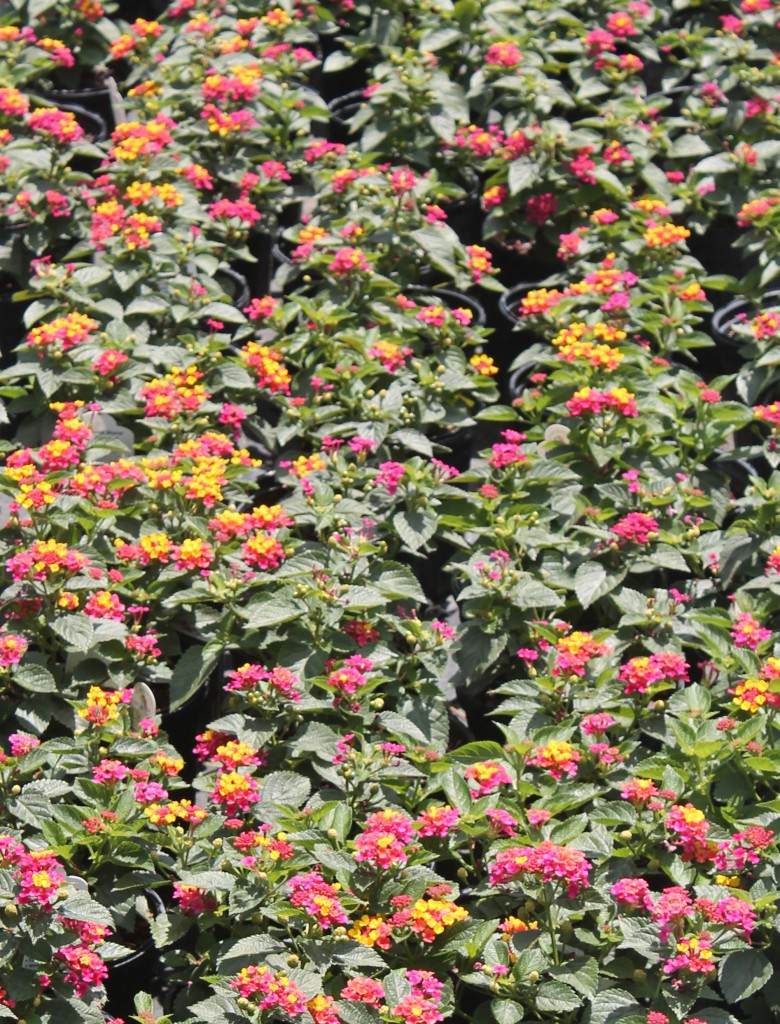
Dwarf lantana – Image UF IFAS Extension, Matthew Orwat
With the heat of summer already here, we all know that our pansies, petunias and snapdragons are on their way out. This leaves us wondering what we could plant that will give us color throughout summer and fall to the first frost.
Many are weary of Lantana camara, the common garden lantana, because of its potential as an invasive species and large rampant size. Good news, there are several dwarf cultivars that have no invasive potential because they are sterile. Additionally, many other dwarf cultivars grow slow and produce few seed, so they have low invasive potential.
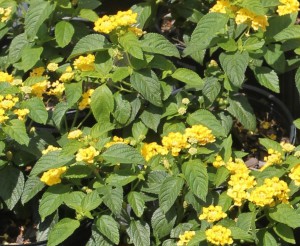
Dwarf lantana. Image credit UF/IFAS, Matthew Orwat
Northwest Florida is not in the natural range of the endangered South Florida native Lantana depressa, so the outcrossing danger does not exist in our area.
Dwarf lantanas are available in either mounding or trailing types. Mounding types rarely get over 1 foot tall and have an equal spread while trailing lantanas stay lower to the ground but can spread several feet. They are available in several colors including yellow, purple, white, multicolor and red. They provide reliable color in flushes from late spring until first frost
When mature, dwarf lantana are drought tolerant but need supplemental watering to get established. They also thrive in poor soils and need little fertilization.
Dwarf lantana usually acts as a perennial, but die to the roots during extremely cold winters.
Lantanas that are known to be relatively non-invasive include Patriot, Hallelujah, Sunburst, and Cowboy. Florida Exotic Pest Plant Council recognizes the cultivars ‘Gold Mound’, ‘New Gold’, ‘Alba’ and ‘Patriot’ as cultivars that are not known to produce viable seeds. Other newer dwarf varieties need to be evaluated on a case by case basis, but varieties the author has observed as no to low seed set in the landscape. Also if home gardeners are worried about seed production, spent blooms can be pinched off so no seed can form. This pinching off practice also speeds up re-bloom and is thus highly encouraged.
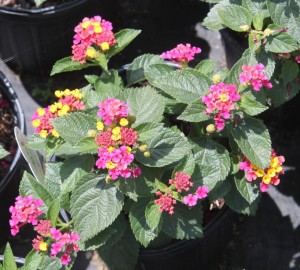
Dwarf lantana – Matthew Orwat, UF/IFAS
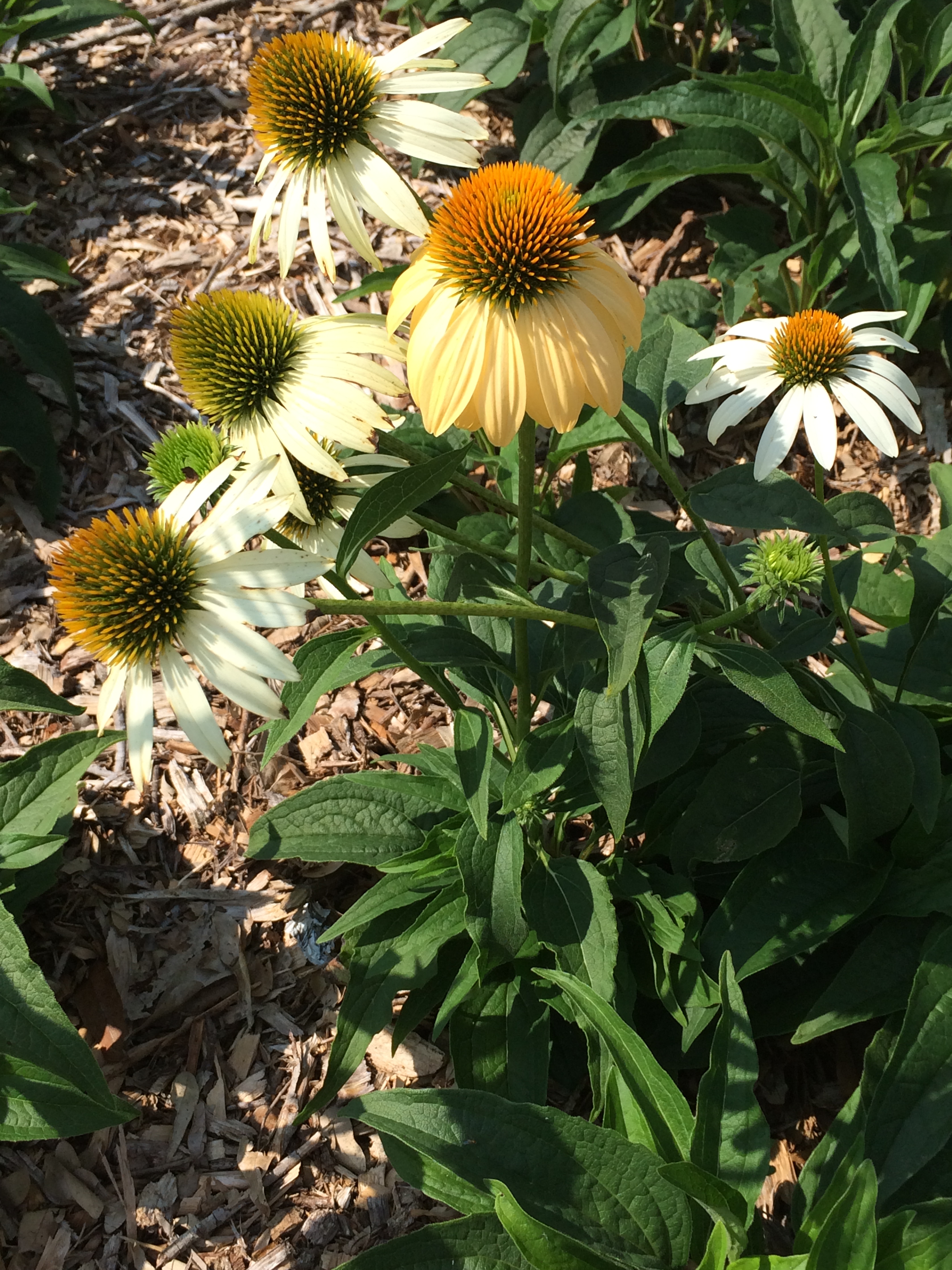
by Mary Salinas | May 12, 2015
An easy to care for perennial to add to your flower garden is the coneflower, Echinacea purpurea. The daisy-like flowers stand tall above the foliage on sturdy 2 to 4 foot stems. Blooms appear about the last part of April or the first of May in the Florida panhandle and last throughout the warm season until late fall. This Florida native reliably comes back year after year. Plant coneflower in part to full sun in rich but well-drained soil for best results.
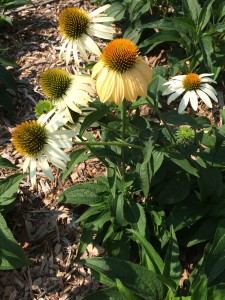
White coneflower. Photo credit: Mary Derrick, UF/IFAS Extension.
Coneflowers are traditionally purple but many new colors and variations of their form have become available from the horticultural industry. You can find them in white, yellows, pinks, oranges, and greens as well as all shades of lavender and purple. No matter what color you choose, the blooms will attract a host of butterflies and other pollinating insects. In order to protect these delicate creatures, avoid the use of pesticides when they are present.
Once you have a few coneflowers, you will notice that the clumps will grow in time and new plants will sprout from seeds left behind by the spent blooms. In our demonstration garden, this has created a stunning display that has been allowed to take over one of the garden beds. When any one clump gets too big, the number of blooms can decrease and it may be time to dig up the clump and divide it. This is a great opportunity to expand your coneflower bed or share them with some friends or neighbors!
For more information:
Ornamentals for your landscape
Butterfly Gardening
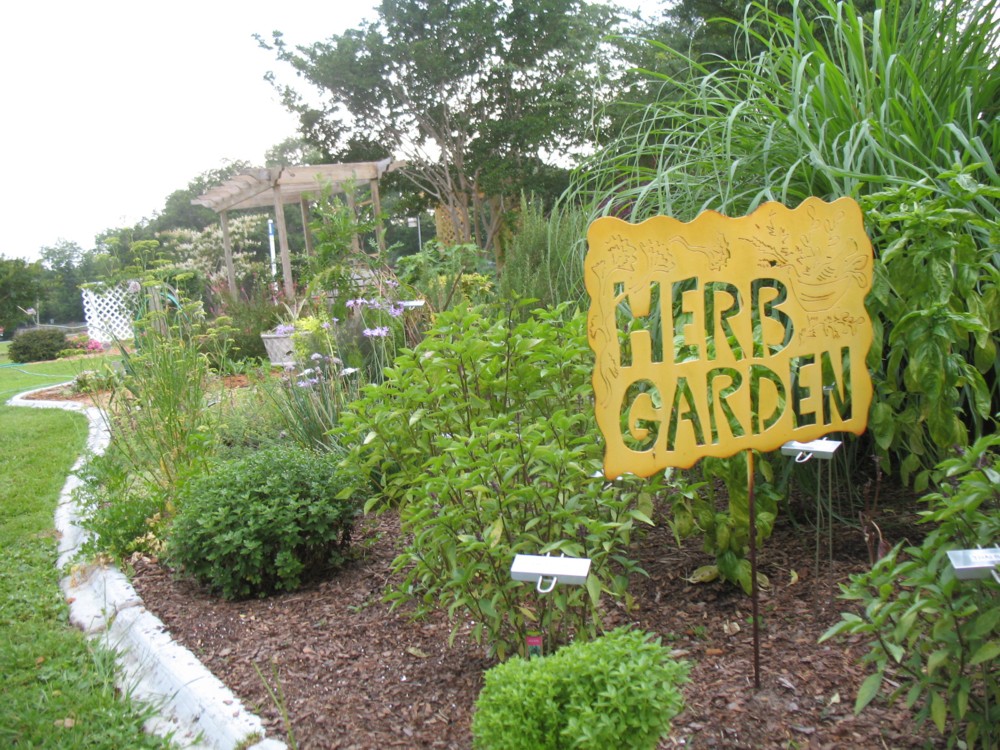
by Roy Carter | May 12, 2015
Herbs are plants that are grown for the special flavor and aroma of their various parts. They are used mainly to season, enrich, or otherwise improve the taste or smell of certain foods. Since they are not classified as vegetables. Since their growth habits and cultural requirements are similar, herbs are often included with vegetables in the garden.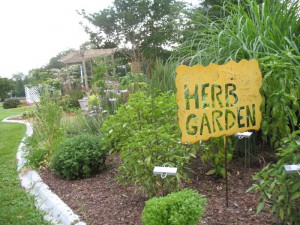
One of the best ways to enjoy year round gardening is to plant an herb garden. Herbs are easy to grow, they require very little care, and they don’t take up much room. Even if you don’t have a large backyard, you can still grow herbs successfully. A small garden bed, a window box, or even a few clay pots, can provide you with fresh, aromatic herbs year round. Herbs are rapid growers and they have a wide variety of uses in the home. They can be used either fresh or dried and when dried they’ll keep for long periods of time.
Herbs are fairly easy to grow. A good garden soil that’s free of weeds and close to a water supply will keep your herbs healthy and growing rapidly. If you can, plant herbs on a narrow strip of land, preferably at the border of your vegetable garden. This will keep your herbs easy to reach. If you scatter them across a wide garden plot, you’ll end up having to walk over the plants to reach and gather them unless you can provide some pathways within your garden. Of course, if you’re growing herbs in window boxes or clay pots, this won’t be a problem.
Dill is probably the easiest and the hardiest herb you can grow. It’s usually planted in late fall and early winter because of its ability to withstand cool temperatures. It may also be planted in the spring. Dill isn’t particularly fussy about its soil so any all-purpose soil that’s suitable for your regular garden vegetables is fine for dill. Another plus is that dill is rarely bothered by any diseases or insects. Fresh dill leaves add excellent flavor to salads and cream sauces, and as a dried herb, dill is well known for the distinct flavor it gives to pickles.
Another popular herb enjoyed by gardeners is sweet basil. This herb is an annual, and it can be replanted in the same area year after year. Basil is also used both fresh and dried. It is widely used as a flavoring for soups, meats and fish. One word of caution: don’t over plant this one. A few basil plants will usually provide more leaves and flowers than an entire family can use in a year.
A few plants, such as sage, balm, and rosemary can be propagated best by cutting. Stems from new growth or the upper parts of older stem make the best cutting for easiest rooting. Cut the stem into 3 to 4 inch pieces each containing a set of leaves or leaf buds near the upper end. To prevent wilting place the cutting in water as soon as they are removed from the plant. A shallow box filled with 4 to 5 inches of a mixture of clean sand, peat, and perlite makes a good root bed. Insert the cutting to a depth of one half-to two thirds their length in the moist mixture; then saturate the mix with water. Place the box in a protected place and keep moist (but not sopping wet) continuously until roots develop in about two weeks. Continue to water until the cuttings are ready to set out in pots or in the garden.
Such plants as thyme, winter savory and marjoram can be propagated by simple layering, which consist of covering the lower portion of the side branches with soil, leaving much of the top of the plant exposed. When the covered part of the stem have rooted, they can be cut from the parent plant and set as individual plants.
Older plants of chive, rosemary and tarragon can be multiplied by dividing the crown clumps into separate parts. These divisions can be set as individual plants.
Mint spreads rapidly by means of surface or underground runners that may grow several feet from the parent plant. The runners, with roots attached, can be removed and transplanted to other locations
Obviously, the list of herbs which grow very well in Florida is quite lengthy, so we won’t be able to go into all of them here. If you can keep in mind just a few points about herb gardens, maybe you can enjoy the virtues of some of these herbs yourself. Remember that herbs are generally very easy to grow and can be adapted to either outdoor garden or indoor container growing conditions. For just a small amount of effort, growing herbs can provide you with year-round gardening satisfaction.
For more information see UF/IFAS Gardening Solutions.
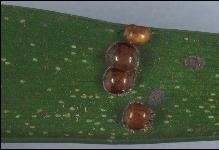
by Eddie Powell | May 8, 2015

Florida soft scale. Photo credit: UF/IFAS.
Scale insects are one of the most serious problems homeowners face on ornamentals this time of year. The most common are armored scale, soft scale, and mealybugs. They cause damage by sucking plant fluids from the leaves, stems, and sometimes roots. Some species feed on the underside of the leaves which can appear as yellowing spots or chlorotic lesions. Heavy infestations can cause extensive leaf yellowing, premature leaf drop, branch dieback, and plant death.
The life cycle starts when the eggs are laid beneath a waxy covering or beneath the adult female. After the eggs hatch two to three weeks later, the nymphs (crawlers) move around the plant until they find a suitable feeding site. Crawlers then insert their straw-like mouthparts into the plant and begin to feed and grow. The male often develops wings and flies to locate a mate.
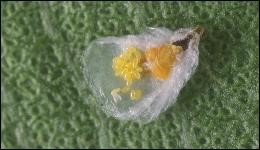
Armored scale nymphs. Photo: UF/IFAS.
Armored scale is distinct from other types of scales because they secrete a waxy covering over their body that is not attached to the body. The scale lives and feeds under this covering ranging 1/16 to 1/8 inch in size. They can be any color or shape, depending on the species. Armored scale does not produce honeydew.
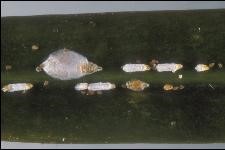
Armored scale. Photo credit: UF/IFAS.
Soft scale also secretes a waxy covering but it is attached to the bodies. Soft scales vary in color, size, and shape. They are circular shaped and range from 1/8 to ½ inch in diameter. Because they consume so much plant sap, they excrete a lot of sugary liquid called honeydew. Honeydew is the sticky liquid found on the leaves.
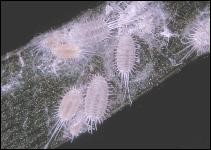
Mealybugs. Photo credit: UF/IFAS.
Mealybugs are soft bodied insects that are often covered with cottony white filaments. They are 1/8 inch in size and feed on all parts of plants. Injured plants have discolored, wilted, and deformed foliage.
Sooty mold is caused when mealybugs and soft scales excrete large amounts of honeydew which provides an excellent medium for the growth of the black fungus. Sooty mold is not only unattractive; it slows down the growth of the plant as it interferes with photosynthesis. Over time, with the control of the insect population, the sooty mold will weather away. Ants can also play a big factor in controlling sooty mold as they will feed on the honeydew.
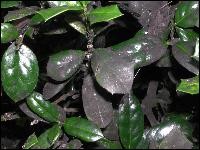
Sooty mold. Photo credit: UF/IFAS.
To control scale and mealybugs, avoid over-fertilizing and monitor your plants often. If the infestation becomes over-bearing, spray a fine mist of Horticultural Oil on the foliage. Avoid spraying in the summer heat because of damaging foliage. Other chemicals that can be used if necessary are Sevin dust and Malathion.
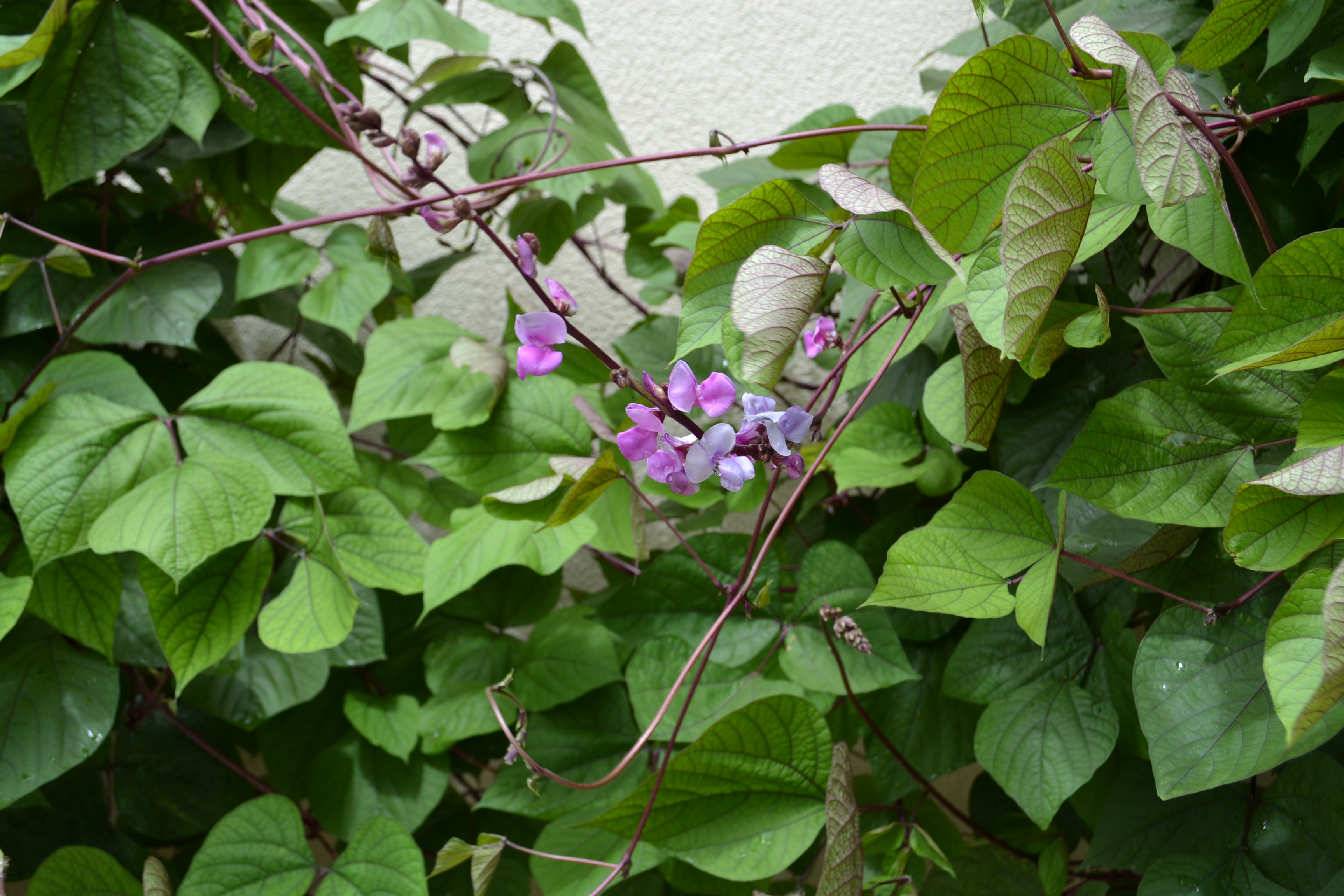
by Beth Bolles | May 6, 2015
Everyone is interested in growing an easy plant that offers interest all throughout the warm season. Look no further than an old favorite, the purple hyacinth bean, Lablab purpurea.
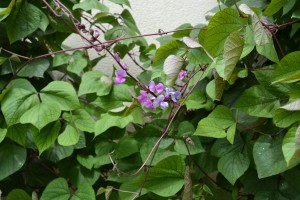
Purple flowers are held above foliage.
An warm season annual vine that grows easily from seeds plants directly in the ground or started in small pots, purple hyacinth bean will quickly cover a trellis, fence, or other sturdy support that you provide. One of the features will be beautiful purple flowers that form on purple stems during the summer. Purple pods will form after the flowers fade and persist until a frost. Mature seeds can be collected and saved for planting the following spring. Seeds that fall to the ground are likely to sprout on their own when soils warm again the following year.
Even though purple hyacinth bean is an edible plant in many parts of the world, it is mostly considered an ornamental in our area. One of the reasons is that raw beans are poisonous and must be properly cooked before eaten. Because of the toxicity of the beans, it is best to plant in the ornamental garden rather than the edible garden.
Additional features of this easy vine are that it is low maintenance, requiring little fertilization and it attracts bees and butterflies. Install seeds or transplants in well drained soil in full sun and you are ensured a plant that will attract attention.















